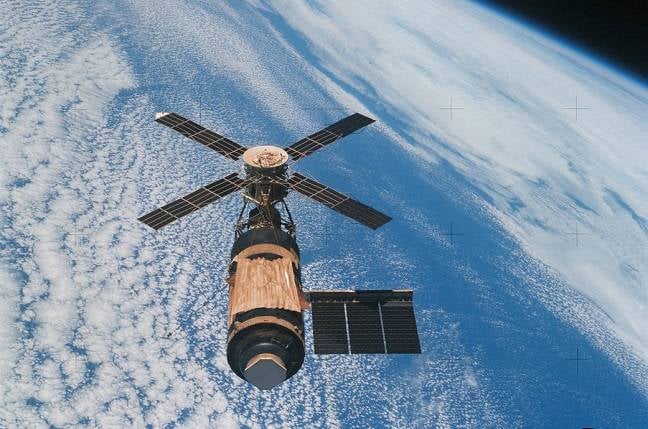This week marks 50 years since the last Skylab crew departed the station after a record-setting 84-day flight.
The crew of Jerry Carr, Ed Gibson, and Bill Pogue launched on November 16, 1973, and returned to Earth on February 8, 1974. Although his space flight record was soon broken by a Russian crew aboard Salyut 6 in 1978, his Apollo spacecraft endured. The record for longest single space flight for an American crew vehicle held until 2021, when SpaceX’s Crew Dragon Resilience broke it.
Sadly, only Gibson remained to congratulate.
Skylab 4 marked the end of long-duration American spaceflight until the Shuttle-Mir program of the 1990s, which laid the groundwork for the International Space Station (ISS).
This mission was notable for more reasons than just its duration. It was the largest all-rookie crew ever launched by NASA and as well as four EVAs – from the last three missions to the laboratory – it also became infamous for the increasingly strained relationship between the crew and ground control.
An unplanned communications breakdown occurred during the mission after the astronauts accidentally misconfigured the radios. in the book Around the world in 84 days By David Shayler, Carr explained: “We turned off our radios and went to one of our ground stations. The press immediately picked up on it and called that a rebellion, saying that we were really a useless group: We were really testing were doing, we had revolted and said we weren’t going to work that day, and we turned off our radios. That thing got in the press, and we never got over that. But actually that That day didn’t happen.”
As noted, relations between the crew and the ground were strained, and the communications lessons learned from the incident and the interactions between mission managers and crew continue to resonate throughout NASA today.
When the astronauts departed Skylab, the proposed 21-day Skylab 5 mission had already been canceled due to the decision to extend Skylab 4 from 59 to 84 days. There was still hope that Skylab could be visited again by the Space Shuttle at some time in the future, but according to Carr’s book, “A review of the onboard systems revealed that the spacecraft could not be visited by any other crew for more than a few hours while docked.” It was impractical to support the station.”
Skylab’s final crew day included the astronauts shutting down systems, conducting microbiology surveys, and cutting pieces of metal from various parts of the workshop to create commemorative medallions.
Skylab’s final closure was clearly an emotional time for the crew; As Carr said, “We realized this would be the last time we would do various acts.” The crew entered the command module (CM), and Carr joked with ground controllers that the crew had left a key under the door mat “so the next crew could enter the workshop.”
The CM went down about 176 miles off San Diego, and the crew returned to shore aboard the USS New Orleans. The end of the mission was not covered live by any major American television network, angering the Carr family. Carr’s son, Jeff, described himself as “very disappointed, very disappointed” by the fact that the media did not treat the return of the last Skylab crew as newsworthy enough.
None of the Skylab 4 crew would fly in space again. This author met Pogue several years ago at the Kennedy Space Center. After patiently answering my questions about the pressurized volume of the ISS compared to Skylab, Pogue took a question from my (then very young) daughter: “But what was it like? What was it like to live there?”
Pogue said with a smile: “It was the best thing ever.”

